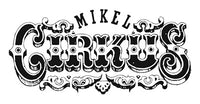Trends With a Zed
Anyone who pays enough attention can certainly keep track of world trends, but the real fortunes of the future are not to be made by following trends, so much as by creating them. Quoting the French writer, poet and journalist Antoine de Saint-Exupéry, “As for the future, your task is not to forsee, but to enable it.” But alas, forecasters are not necessarily creative people, for they don’t actually create anything. They’re not really designers either, as they simply articulate l'air du temps – the French expression that roughly translates to "the current trend.”
It was twenty years ago when Steven van der Kruit, being the elder of our Firmenich Creative Marketing tribe, took the leadership role of our three-day consortium with the goal to create a Billboard of Trends. Everyone took their turn at presenting the material evidence they had been accumulating over the last six months and we ended up with a daunting list, that upon careful review, seemed to reveal global commonalities. There was in fact a pattern that emerged, not just within the list, but also among ourselves. We were all looking in similar places, and coming to similar conclusions – these weren’t trends, they were signals. According to Amy Webb in her book The Signals Are Talking, ‘a trend leverages our basic human needs and desires in a meaningful way and aligns human nature with emerging technologies and breakthrough inventions. We must think of trends as signposts that can illuminate the conditions we will likely encounter at some point in the future.’ It didn’t matter from which region we were from, all of our customers were asking the same question - What’s next?
We began distilling our list of over 600 signals by realizing almost immediately that they could all be bundled into separate thematic categories. A simple matter of ‘these things all go together.’ In the end, the six platforms were: Nature, Wellbeing, Experience, Happiness, Heritage, and Ancestral. Over the years, more platforms were added including Connectivity (2005), Empowered (2007), New Page (2009), and most recently, Metamorphosis (2019). I had taken the artistic license of changing the spelling to Trenz, and the name stuck. To me, it was just the way Steven pronounced the word ‘trends’. For the rest of the team, it was the way we would all pronounce it, and recognize it, from then on. Jaime Krayger designed the timeless logo, and today, that white elephant more closely resembles Ganesha, the Hindu god of beginnings, symbol of wisdom and understanding, as well as patron deity of art and science.


Leave a comment